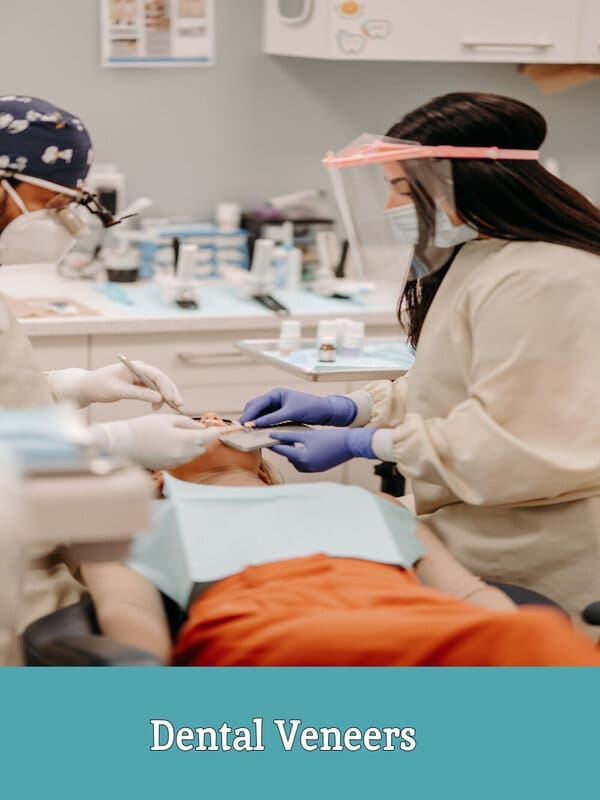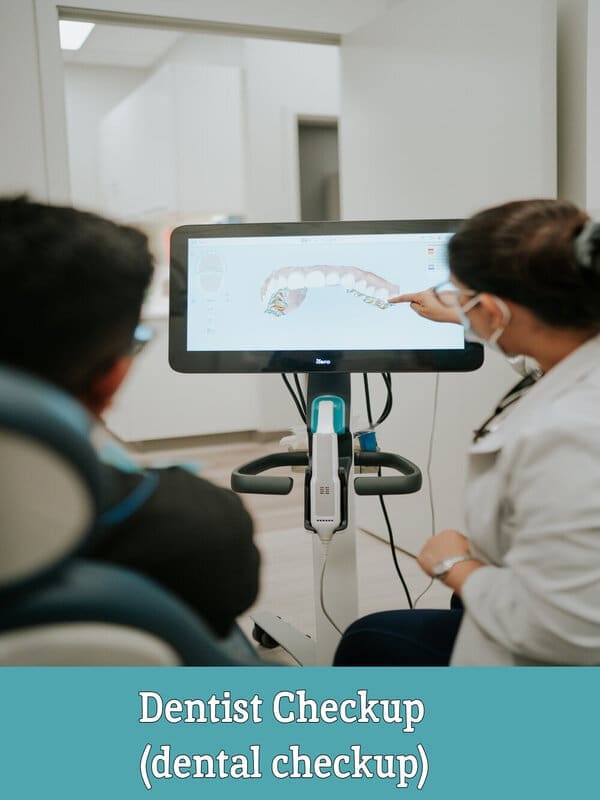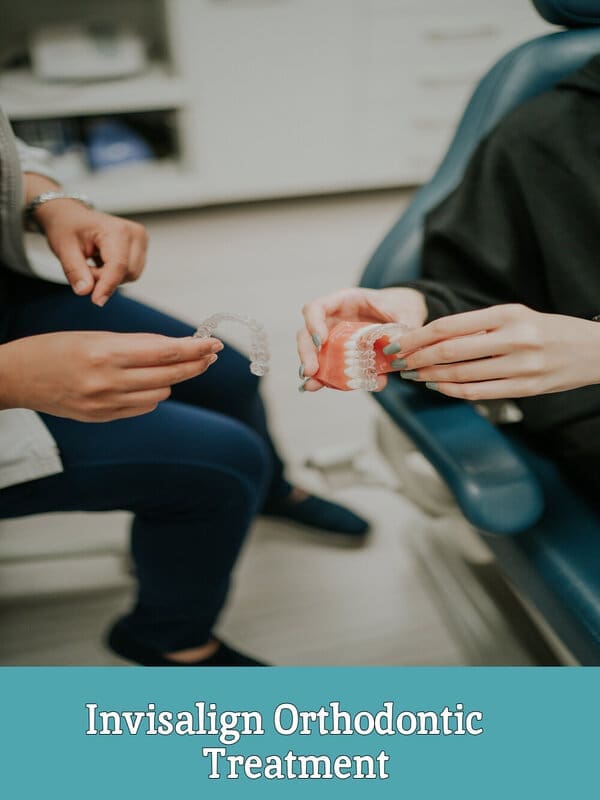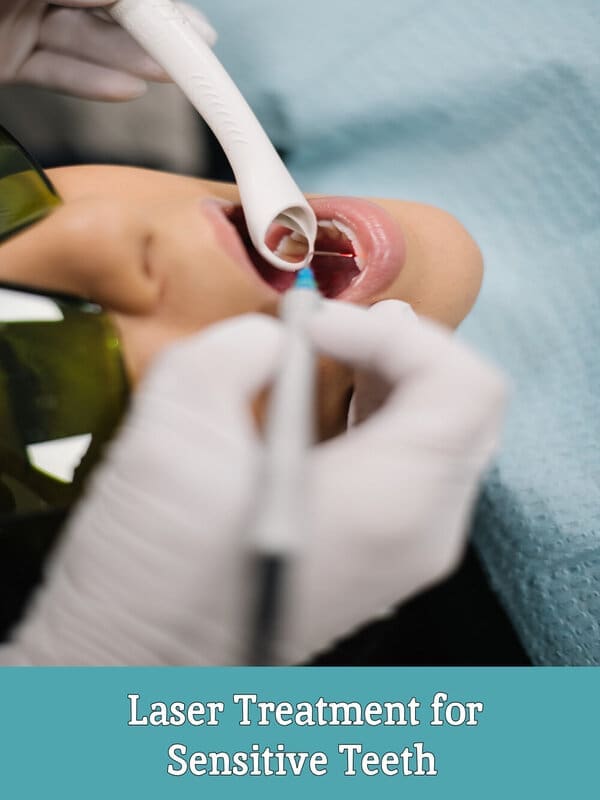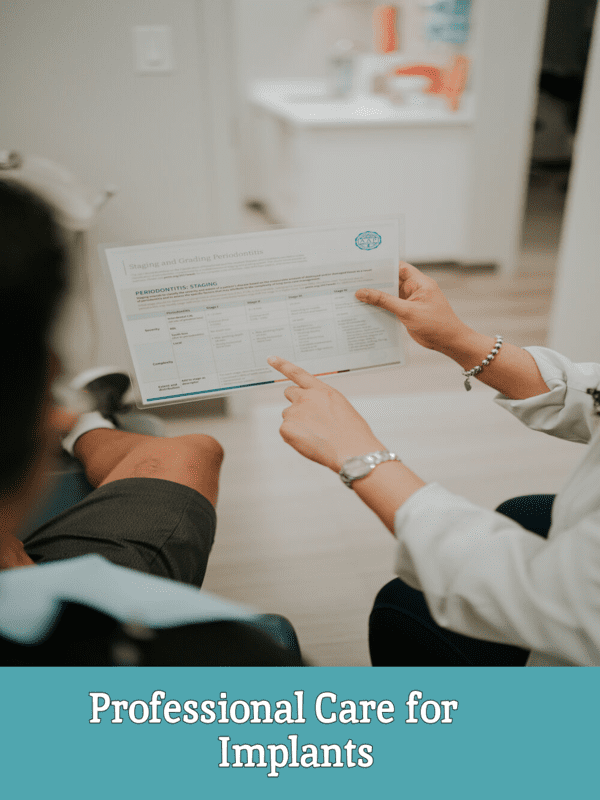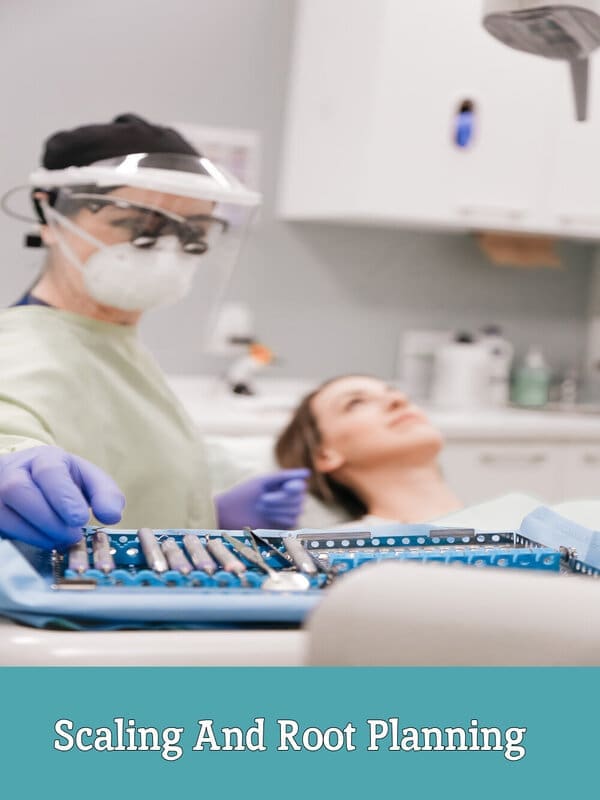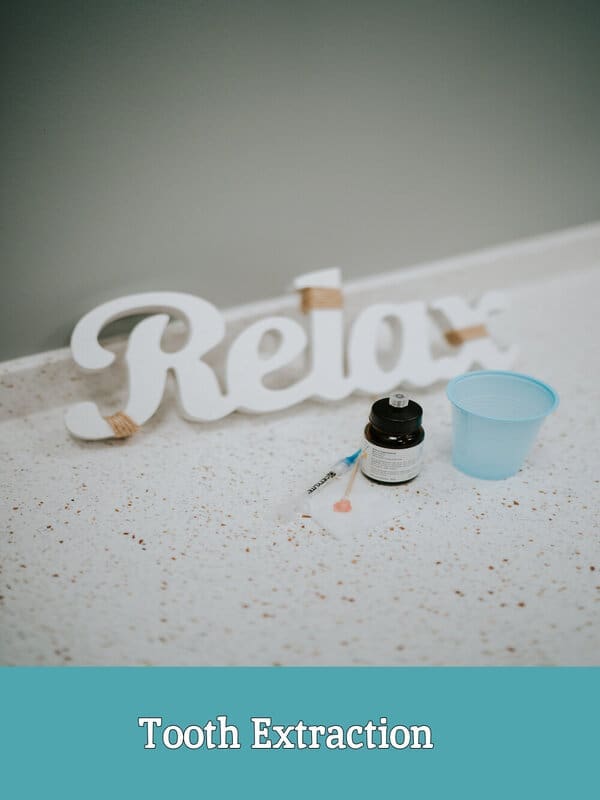Tooth extraction Edmonton
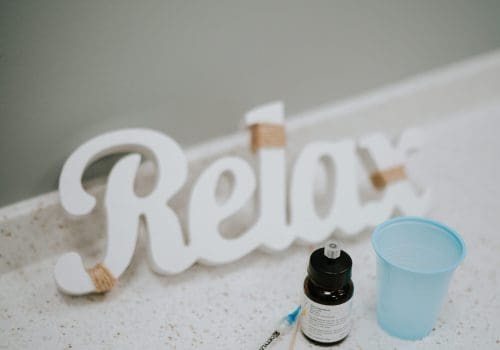

What is tooth extraction?
Tooth extraction is a dental procedure that involves removing a tooth from its socket in the jawbone. This procedure is commonly needed when there is severe tooth decay, gum disease, injury, crowded teeth, or when preparing for orthodontic treatment. Wisdom teeth are often extracted due to impaction or crowding issues. If you live in Edmonton and require wisdom tooth extraction services, the talented dentist at our Clean Smiles Dental Hygiene Clinic can help you.

What happens during a tooth extraction?
Tooth extraction is a complex procedure that involves several key steps to ensure its success.
Firstly, a local anesthetic is administered by the dentist or oral surgeon to numb the area around the tooth that needs to be removed. This ensures that the patient does not feel any pain during the procedure. In some cases, such as with impacted wisdom teeth or complex extractions, general anesthesia may be used instead.
Once the area is numb and the patient is comfortable, the dentist will use specialized instruments to loosen and remove the tooth from its socket gently. This may involve rocking motions or controlled pressure to dislodge the tooth roots from their attachment in the jawbone. In more complex cases, where a tooth is severely decayed or impacted, it might be necessary to perform a surgical extraction. This involves making an incision in the gum tissue and potentially removing small portions of the bone surrounding the tooth.
After successfully extracting the tooth, the dentist will clean and inspect the extraction site for any remaining debris or infection. They may also stitch up any incisions made during a surgical extraction if necessary. To aid in healing and prevent excessive bleeding, patients are often given gauze pads to bite down on for a specified period after surgery.
Dental professionals then provide post-extraction care instructions. These instructions typically include information on when it is safe to eat after a tooth extraction (usually soft foods are recommended for at least 24-48 hours) and when it is appropriate to brush teeth again (usually after 24 hours, but taking care around sutures if present), how long gauze should be used (until bleeding subsides), and what potential complications or signs of infection should be monitored for.
Possible Complications
It’s important to be aware of potential complications during tooth extraction and seek prompt medical attention if any symptoms occur. While complications are relatively rare, it’s crucial to follow post-extraction care instructions provided by your dentist or oral surgeon to reduce the risk of developing them.
Dry Socket
One possible complication is dry socket, which happens when the blood clot forming in the tooth socket after an extraction dislodges or dissolves prematurely. Dry socket can cause severe pain and a foul odor in the mouth. To minimize the risk of developing a dry socket, patients should follow their dentist’s instructions on when to stop using gauze after tooth extraction.
Infection
Another potential complication is infection, which can manifest as swelling, redness, and discharge around the extraction site. Infections can occur if bad oral hygiene is practiced after the procedure or if bacteria enter the open wound during the healing process. Following post-extraction care instructions, including when to brush your teeth after wisdom tooth extraction, can help prevent infections from developing.
Excessive bleeding following a tooth extraction is another complication that can occur. While it’s normal to have some bleeding for a few hours after the procedure, persistent or heavy bleeding beyond 24 hours may indicate a problem. If this occurs, it’s essential to contact your dental professional immediately or seek emergency tooth extraction assistance.
Swelling and bruising are common side effects of any surgical procedure, including tooth extractions, and they usually subside within a few days. However, if swelling worsens significantly or persists longer than expected, or if you experience severe pain not relieved by prescribed pain medication, it’s crucial to consult with your dentist for proper evaluation and guidance.
Additionally, eating habits must be considered post-tooth extraction. While it’s generally recommended to wait for at least 24 hours before consuming solid foods after an extraction (to allow proper blood clot formation), soft foods and liquids are typically safe to consume soon after the procedure. It’s vital to avoid using straws, as the suction created can dislodge the blood clot and lead to complications such as dry socket.
Remember that each individual case may vary, so consult with your dental professional for personalized advice regarding your specific situation. Following your dentist’s guidelines on post-extraction care can significantly reduce the risk of complications such as dry socket, infection, excessive bleeding, and prolonged swelling.
Tooth Replacement Options
Tooth extraction can leave a gap in your smile, which concerns many individuals. However, there are several tooth replacement options available that can restore both the functionality and aesthetics of your teeth.
Dental Implants
One common option is dental implants. These are titanium posts that are surgically placed into the jawbone, serving as a sturdy foundation for artificial teeth. Dental implants are highly recommended for individuals who have lost a single tooth or multiple teeth due to extraction. They provide a long-lasting solution and closely mimic the look and feel of natural teeth.
Dental Bridge
Another option for tooth replacement is a dental bridge, which consists of artificial teeth anchored to neighboring healthy teeth or dental implants on either side of the gap. This restoration fills in the space left by the extracted tooth and helps maintain proper alignment and bite function. Dentures can be an appropriate choice for those looking for a removable solution following a tooth extraction.
Dentures come in two types:
Complete dentures – These replace all teeth in either upper or lower arches,
Partial dentures – These replace only a few missing teeth while preserving existing natural ones. Although dentures may take some time to adjust to initially, they provide an affordable and accessible option for restoring your smile after tooth extraction.
It’s important to note that the choice of tooth replacement options may depend on various factors such as jawbone health, overall oral health, patient preference, and budget considerations. Consulting with your dentist or oral surgeon will help determine which option suits you best. Understanding available tooth replacement options becomes crucial in ensuring optimal oral health post-extraction. Whether considering dental implants as a long-term solution or exploring removable alternatives like dentures or bridges, finding an appropriate approach depends on individual circumstances ranging from cost factors (such as wisdom tooth extraction cost) to personal preferences.
Looking for a good dentist for tooth extraction surgery in Edmonton?
At Clean Smiles Dental Hygiene Clinic, our skilled dentist and team are here to help. We ensure your comfort during the tooth extraction procedure or any other dental services that you require. Our clinic in Edmonton has a calming, private, hygienic, and friendly environment with affordable services.
Other services
Book Your Appointment
We will contact you shortly to schedule your appointment
When To Stop Using Gauze After Tooth Extraction
After a tooth extraction, it is important to follow the post-operative instructions provided by your dentist or oral surgeon. One essential aspect of the healing process is knowing when to stop using gauze after the tooth extraction. Gauze is placed over the extraction site to control bleeding and promote blood clot formation, which is necessary for proper wound healing. It acts as a barrier between the socket and the oral environment, preventing contamination and promoting safe recovery. The duration for which gauze should be used varies depending on individual cases and how well the body responds to the procedure.
In most cases, it is recommended to keep gentle pressure on the gauze pad for 30-45 minutes immediately following the tooth extraction. This initial period allows for proper blood clot formation in the socket. Once this initial time has passed, you can remove the gauze pad gently from your mouth without disturbing or dislodging any forming clots. It’s important not to disturb the clots as they serve as a protective barrier over the extraction site and promote healing.
However, contact your dentist immediately if bleeding persists after removing the gauze pad or if you experience excessive bleeding during an emergency tooth extraction. It is worth noting that excessive use of gauze after tooth extraction can interfere with proper healing. Constant pressure on the surgical area may disturb blood clot formation or cause irritation to surrounding tissues, leading to complications such as dry sockets or prolonged bleeding.
Regarding oral hygiene practices following a wisdom tooth extraction or any other type of tooth removal procedure, it’s essential to strictly follow your dentist’s instructions regarding brushing your teeth. Generally, dentists advise waiting at least 24 hours before resuming normal brushing routines near an extraction site. However, during this waiting period, gentle rinsing with a saltwater solution provided by your dentist can help maintain cleanliness without disrupting blood clot formation.
Knowing when to stop using gauze after a tooth extraction is an important aspect of the recovery process. Typically, gauze pads are used for around 30-45 minutes immediately after the extraction to control bleeding and promote blood clot formation. Removing the gauze pad gently without disturbing any forming clots is crucial. Excessive use of gauze can interfere with proper healing and should be avoided. Additionally, it is advisable to follow your dentist’s instructions regarding oral hygiene practices, including when you can resume brushing your teeth near the extraction site. By following these guidelines, you can ensure a smooth recovery and minimize the risk of complications such as dry socket or prolonged bleeding.
Please note that specific details like wisdom tooth extraction Edmonton, tooth extraction cost Edmonton, or wisdom tooth extraction cost may vary depending on location and individual dental practices. It’s always best to consult with your own dentist for personalized information pertinent to your situation.
When Can I Brush My Teeth After Wisdom Tooth Extraction?
After having a wisdom tooth extraction, it’s important to know when you should start brushing your teeth again. Good oral hygiene is essential, but it’s equally important not to interfere with the healing process or cause any discomfort. Generally, it’s recommended that you should wait at least 24 hours after the procedure before brushing your teeth.
This allows time for the initial clot formation, which reduces the risk of dislodging the blood clot. Dislodging the blood clot can lead to dry socket, a painful condition that can occur after a tooth extraction. During the first night after the procedure, some bleeding and swelling may occur. It’s important to follow any instructions from your dentist or oral surgeon regarding home care and managing these symptoms during this period. You should avoid brushing your teeth on the day of the surgery as excessive movement near the surgical area can potentially disturb the forming blood clot and impede proper healing.
On the second day after the extraction, you can start incorporating gentle oral hygiene practices into your routine. Take care when brushing around the surgical area, and use a soft-bristle toothbrush to minimize irritation while cleaning your teeth effectively. It’s important to avoid touching or applying excessive pressure on the extraction site. After meals or snacks, rinse your mouth gently with warm salt water to keep the area clean without disrupting any forming clots or irritating sensitive tissues. You should continue this practice until your dental professional advises otherwise.
Does a cracked tooth need to be pulled?
Not necessarily. Whether a cracked tooth needs to be pulled depends on the extent of the crack, the location of the crack, and the overall health of the tooth. In many cases, a dentist will try to save a cracked tooth through various dental procedures.
If the crack is small and doesn’t extend into the pulp (the innermost part of the tooth containing nerves and blood vessels), the dentist may be able to repair the tooth with a filling or crown. If the crack is more severe and extends into the pulp, a root canal may be necessary to remove damaged tissue and nerves, followed by the placement of a crown to restore the tooth’s strength.
However, if the crack is extensive, reaches below the gum line, or if the tooth is severely damaged and cannot be effectively restored, extraction may be the only viable option. Extraction is typically considered when saving the tooth is not feasible or if it poses a risk to the surrounding teeth and tissues.
It’s important to consult with a dentist who can assess the specific situation and recommend the most appropriate course of action based on the severity of the crack and the overall condition of the tooth. Regular dental check-ups are crucial for the early detection and management of dental issues, including cracked teeth.
How long does a tooth extraction take?
The duration of a tooth extraction can vary depending on several factors, including the complexity of the procedure, the location of the tooth, and the individual’s overall oral health. On average, a straightforward extraction usually takes around 20 to 40 minutes to complete.
However, it is important to note that more complicated cases, such as impacted wisdom teeth or multiple extractions, may require longer appointment times. When determining how long a tooth extraction will take, your dentist will carefully assess your specific situation during an initial consultation. They will consider factors such as the position of the tooth roots and any potential complications that may arise during the procedure. Additionally, your dentist may also take into account your medical history and any pre-existing conditions that could impact the treatment plan.
During a typical extraction process, your dentist will begin by administering a local anesthetic to numb the area surrounding the affected tooth. This ensures that you do not experience any pain or discomfort throughout the procedure. After allowing sufficient time for the anesthetic to take effect, your dentist will use specialized instruments to gently loosen and remove the tooth from its socket.
Following extraction, your dentist may place gauze over the socket to control bleeding and promote blood clot formation. It is important to follow their instructions carefully regarding when and how often you should change this gauze. Typically, it is recommended to replace the gauze every 30 minutes until the bleeding subsides.
After completing a tooth extraction procedure successfully, your dentist will provide you with post-operative instructions on how to care for your mouth during healing. This includes guidelines on when you can safely resume brushing your teeth after wisdom tooth extraction and what foods are suitable for consumption in order to maximize healing while minimizing discomfort.
Overall, while each case is unique with varying factors at play like emergency situations or cost concerns (such as tooth extraction cost Edmonton or wisdom tooth extraction cost), it is essential for patients not only in Edmonton but wherever they may be to consult with a dental professional regarding the estimated duration of their tooth extraction. Trusting your dentist’s expertise and following their post-operative instructions diligently will contribute significantly to a smooth recovery process after a tooth extraction near you.
How long after a tooth extraction can you eat
After a tooth extraction, it is important to follow certain guidelines to ensure a smooth recovery process. One common concern for people undergoing this procedure is when they can start eating regular food again. The timing of when you can eat again depends on several factors, including the complexity of the extraction and your individual healing capabilities.
Immediately after the procedure, it is recommended to avoid eating until the anesthesia wears off completely to prevent accidentally biting your tongue or cheek due to numbness. During this time, it is best to stick with a liquid or soft-food diet that won’t put excessive pressure on the healing site. Opt for options such as smoothies, soups, yogurts, purees, or mashed foods that are easy to consume without much chewing.
As time progresses and your mouth heals, you can gradually introduce more solid foods into your diet. Typically, within the first 24 hours after a tooth extraction, you may begin with soft foods that require minimal chewing, like scrambled eggs or cooked vegetables. It’s important to chew on the opposite side of your mouth from where the extraction took place to avoid irritation or injury.
Around two to three days after the procedure, most people find they can comfortably eat semi-solid foods that require slightly more chewing. This could include pasta dishes, rice, pancakes, or well-cooked meats that are cut into small pieces. However, it is important not to rush into eating harder foods too soon as this may prolong the healing process and increase the risks of complications. Every person’s recovery timeline may vary slightly depending on their unique circumstances.
It is advisable to follow your dentist’s instructions and pay attention to any specific post-operative guidelines they provide regarding diet and nutrition during this period. While it’s important not to neglect nourishment during recovery, be cautious about what you choose, as certain types of food can impede healing or cause discomfort. Avoid consuming spicy or excessively hot foods, as they could irritate the extraction site. Additionally, carbonated beverages and alcoholic drinks should be avoided as they may interfere with blood clot formation and increase the risk of developing a dry socket.
Gradually progressing from liquids to soft foods and eventually incorporating more solid options can ensure a successful recovery while reducing potential complications. Remember to consult your dentist or oral surgeon for specific dietary recommendations based on your individual case to achieve optimal healing after tooth extraction.
What can I eat after tooth extraction?
After tooth extraction, following a proper diet that promotes healing and minimizes discomfort is important. During the initial days following the procedure, sticking to soft and easily chewable foods is highly recommended. Opt for options that are gentle on the extraction site and do not require heavy chewing. Soups, broths, smoothies, and purees are excellent choices during this period. They provide necessary nutrients while being soothing to the area where the tooth was extracted.
As you progress in your recovery, you can gradually introduce slightly more solid foods into your diet. For example, soft fruits like bananas and avocados can be included as they are easy to eat without exerting much pressure on the extraction site. Cooked vegetables like mashed potatoes or steamed carrots can also be enjoyed as they provide essential vitamins and minerals for healing.
It is important to avoid hot or spicy foods during the initial stages of recovery as they may irritate the extraction site or cause pain. Similarly, crunchy or hard foods should be avoided as they could potentially dislodge blood clots or cause damage to sensitive areas.
Furthermore, it is crucial to maintain good oral hygiene even after a tooth extraction. While brushing immediately after the procedure should be avoided initially to prevent disturbing blood clots or causing bleeding, gentle rinsing with salt water can help keep the area clean and reduce inflammation.
In terms of timing for reintroducing regular food into your diet after a tooth extraction, it is generally recommended to wait until at least 24 hours have passed since the procedure before consuming solid food again. However, every individual’s healing process may vary slightly depending on factors such as age and overall health condition. It’s best to consult with your dentist or oral surgeon for specific guidance tailored to your situation.
Following a balanced diet that primarily consists of soft foods in the days following a tooth extraction promotes optimal healing while minimizing discomfort. Gradually introducing more solid foods over time, maintaining good oral hygiene, and consulting with your dental professional will help ensure a smooth recovery process. Remember, taking proper care of the extraction site and following the recommended dietary guidelines is crucial for a swift and successful recovery.
Why no dairy after tooth extraction?
After a tooth extraction, it’s crucial to follow the post-operative instructions provided by your dentist or oral surgeon. One common dietary restriction advised after tooth extraction is avoiding dairy products. Although it may seem surprising, there are valid reasons behind this recommendation.
- Dairy products such as milk, yogurt, and cheese are relatively high in fat content. Consuming high-fat foods immediately after a tooth extraction can potentially lead to complications like delayed healing and increased swelling. The body requires an optimal healing environment after the procedure; fatty foods can hinder this process.
- Dairy products tend to have a sticky consistency that can easily get lodged in the empty socket left behind by the extracted tooth. Food particles lodged in the socket may promote bacterial growth and increase the risk of infection. Proper oral hygiene during the healing period is crucial to minimize any chances of infection.
- Some dairy products contain lactic acid, which can potentially irritate the sensitive tissues surrounding the extraction site. These tissues need time to heal without unnecessary irritation or inflammation that could result from consuming acidic food or beverages.
It’s important to note that this restriction is temporary, and once sufficient healing has occurred (usually within a few days), and any post-operative swelling has subsided, you can gradually reintroduce dairy into your diet. Refraining from consuming dairy products immediately after tooth extraction serves multiple purposes: reducing potential complications related to fat content interfering with healing, preventing food debris from getting trapped in the socket, and promoting infection risk reduction due to lactic acid found in some dairy items. Following these guidelines will aid in ensuring proper recovery and decrease any discomfort associated with this dental procedure.


